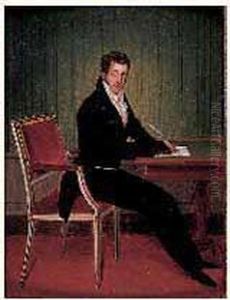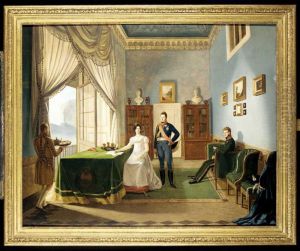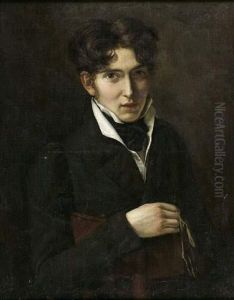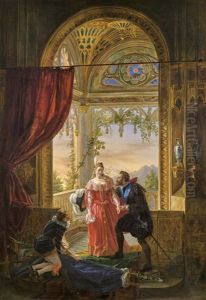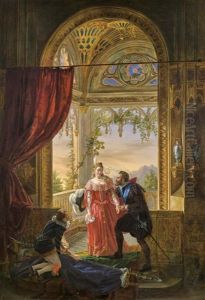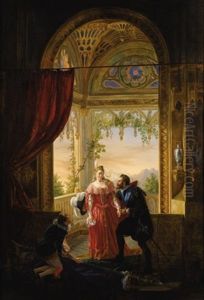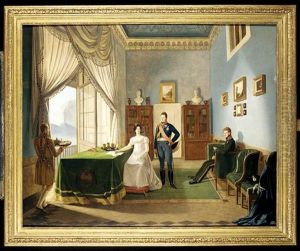Louis Nicolas Lemasle Paintings
Louis Nicolas Lemasle was a distinguished French painter, born in 1788 in Bourges, France. Throughout his life, Lemasle developed a unique artistic style that harmonized the classical traditions of French painting with the emerging Romantic sensibilities of his time. His oeuvre is marked by a profound attention to detail, a rich color palette, and a dynamic portrayal of figures and landscapes, elements that made him a significant figure in the French art scene of the 19th century.
Lemasle received his formal education in art at the prestigious École des Beaux-Arts in Paris, where he was under the tutelage of renowned artists such as Jacques-Louis David. This education grounded him in the techniques and principles of Neoclassicism, which initially influenced his style. However, as his career progressed, Lemasle began to incorporate more emotive elements into his work, aligning him with the burgeoning Romantic movement, which sought to express more emotion and individualism than the classical styles.
Throughout his career, Lemasle was recognized for his exceptional talent and received numerous commissions for portraits, religious subjects, and historical paintings. His ability to capture the essence of his subjects with sensitivity and depth made his portraits particularly sought after by the elites of French society. Moreover, Lemasle contributed significantly to the decoration of several important buildings and churches in France, showcasing his versatility and mastery over large-scale compositions.
Lemasle's contributions to French art were acknowledged in his lifetime; he was awarded various honors and became a respected member of the art community. Despite his success, Lemasle always sought to evolve his artistic expression, experimenting with light, color, and composition in ways that influenced the generations of artists that followed.
Louis Nicolas Lemasle passed away in 1876, leaving behind a legacy that is celebrated for its fusion of classical grace and Romantic vigor. His works continue to be admired for their technical excellence and emotional depth, and they hold a significant place in the collections of French museums and galleries, as well as in the wider history of European art.
